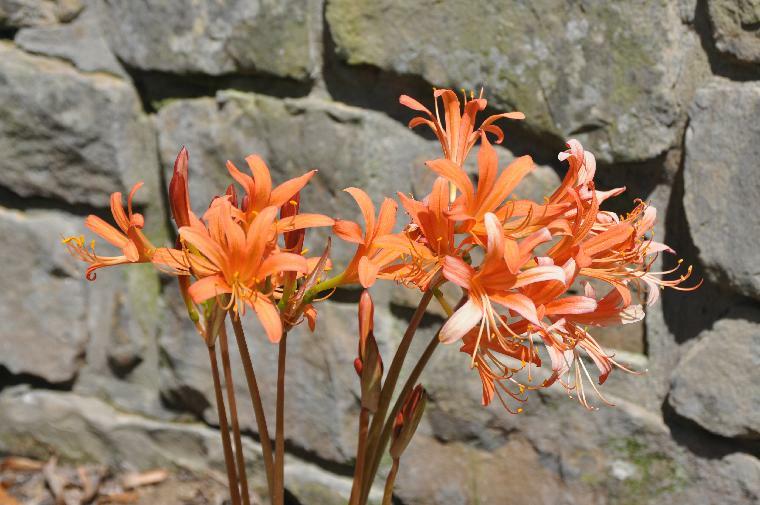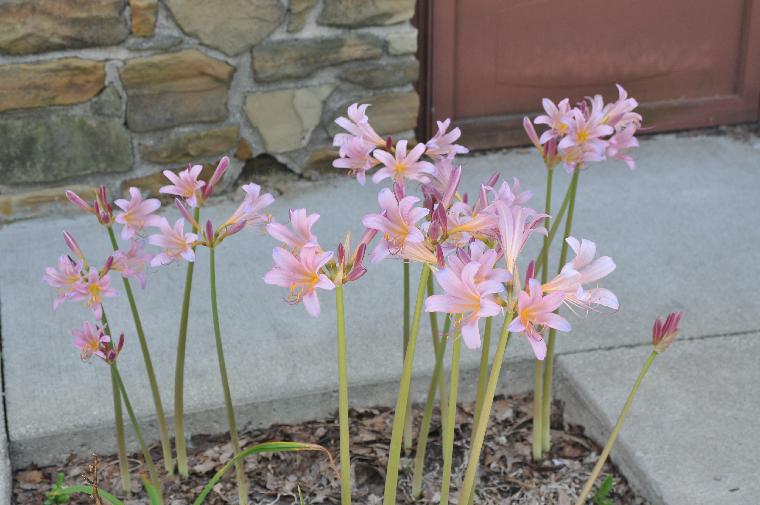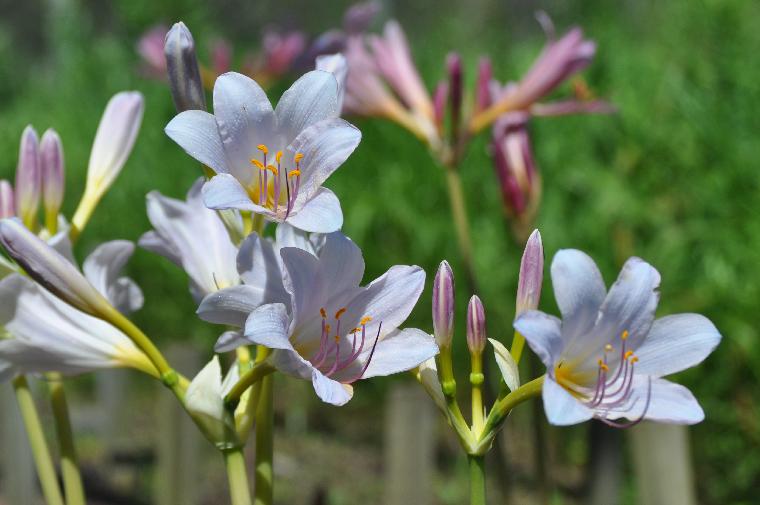The weather here was quite warm. Our string of continuous 90-degree or higher days reached 23, a new record for Indianapolis. For most of July, we had only about a half inch of rain until the last week. On about the 29th, we had a couple of rains that totalled 1 inch. Then this week, we had another inch. Our drought is broken, and our heat wave is broken. Yesterday's high here in Westfield was about 75°F and today's was only around 80°F. Virtually Heaven!
Late summer is Lycoris season here. They can show up any time from early August to mid-September, depending on the weather. The ones sending up stalks right now are in the beds that received some supplemental irrigation this summer. The beds that got no extra water are showing not a single Lycoris stalk so far. This is telling us something.
Lycoris sanguinea var. kiusiana
This is the first Lycoris to bloom for me each summer. I had it listed just as L. sanguinea, but Barry Yinger saw it in my Facebook page and set me straight. I have never actually seen the typical form, L. sanguinea var. sanguinea.

Lycoris sanguinea var. kiusiana
This is also the smallest Lycoris among the spring-foliage varieties that I grow here. I'm not sure just how hardy this variety actually is, as I have it growing right up against the wall of a greenhouse. I seem to recall having bought quite a number of these bulbs and having planted them in several places. Well, however I did it originally, this is the only batch I have left.
Lycoris squamigera
This used to be an old, familiar, hand-me-down bulb when I was younger. You very rarely see it anymore, except perhaps in the occasional small town out in the countryside. It does not set seeds, as a rule, but it produces offsets abundantly over the years.

Lycoris squamigera
L. squamigera is the second Lycoris to bloom for me. It is not hard to find in commerce, and it certainly deserves to be grown more widely in the cold climates that it likes. It looks absolutely terrific in masses! It is almost foolproof, once you plant healthy bulbs, but see the culture advice just below.
Lycoris longituba
Lycoris longituba is another spring-foliage species, perfectly hardy here in central Indiana. The one pictured below is apparently a hybrid, probably having L. sprengeri somewhere in its ancestry. The photo looks light blue, but to the naked eye the color is more of a very pale lavender. This one showed up in a batch of bulbs from the Shanghai Botanic Garden, imported some years back by Dr. Jim Waddick.

Lycoris longituba, Blue Hybrid
No. 1324.A
Note the sprengeri-like red coloration on the outside of the unopened buds.
L. longituba and L. chinensis are following along slightly behind L. squamigera in blooming. L. caldwellii will come along later. I have other hardy and semi-hardy types here, but they do not always bloom every year. We'll see what else shows up and blooms this year.
Lycoris Culture
The hardy, spring-foliage varieties of Lycoris I grow here require several things for success:
- Healthy, undisturbed roots
- Cold winters
- Warm to hot summers, but with periodic rainfall
- Light shade
This really ought to be all you need to give them. There are limits to how much cold they can take. They seem to be marginal in USDA zone 4, surviving in some microenvironments and disappearing in others.